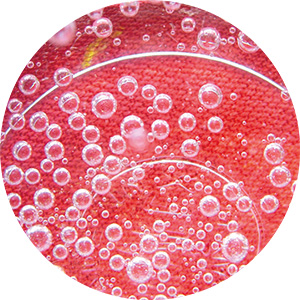Your terminology checklist
The basis for unambiguous, consistent communication is clean and well-coordinated terminology. But how can terminology resources be built up, consistently maintained and kept up to date within the company? And how can this be done consistently across all languages? Our checklist takes you step by step through some of our best practice solutions.
A refreshing example...
“ B r a u s e ”
Meaning 1 // Abreviation of “Brauselimonade” (fizzy lemonade)
Meaning 2 // Low German word for “shower”
Meaning 3 // Sieve-like attachment for watering cans
Our example shows the importance of unambiguous language. Incidentally, clear terminology also prevents queries from arising during the translation process – thus saving valuable time.
General terminology principles
Is your term...
accurate, unambiguous, translatable?
It is important to find the right balance between specification and general validity:
Not “Messstab” (measuring rod). Not “Motorölmessstab” (engine oil dipstick). Rather “Ölmessstab” (oil dipstick). Also applicable for Motoröl (engine oil), Hydrauliköl (hydraulic oil), Getriebeöl (gear oil), …
Not “Sitz” (seat). Not “Vordersitz” (front seat). Rather “Beifahrersitz” (front passenger seat). After all, the driver's seat is also a front seat.
Not “Leitung” (line). Rather “elektrische Leitung” (electric line), “hydraulische Leitung” (hydraulic line), “pneumatische Leitung” (pneumatic line). The word “Leitung” (line) alone has no clear translation.
Have you used...
a shorter, unambiguous term rather than a longer one in your terminology?
Not “Einstellungshebel” (adjustment lever). Rather “Einstellhebel”.
Not “Dichtungsmasse” (sealing compound). Rather “Dichtmasse”.
If possible, avoid using the suffix -ung in your term. In German, words such as Einstellung, Abdeckung or Verriegelung, for example, can be the name of both a component and a process. This makes translating more difficult.
Not “Abdeckung” (cover/covering). Rather “Abdeckblech” (cover plate).
Not “Dichtung” (seal/sealing). Rather “Dichtring” (sealing ring).
Is your term...
linguistically and logically correct?
All grammatical references in the term must be correct.
Not “elektronischer Steuergerätehalter” (electronic control unit holder). Rather “Halter des elektronischen Steuergeräts” (holder of the electronic control unit). It's not the “Halter” that is electronic, rather the “Steuergerät”.
Have you considered...
all the criteria when choosing your term?
As a general rule, terms should be chosen according to form or shape, function or use. Using criteria such as colour or location (installation site) is more likely to lead to different variants, as these characteristics can change quickly. However, the purpose is always relevant, which means that the location or colour can be decisive, for example, front left mudguard, rear axle, green LED.
Function: injection pump, parking brake
Use (“for”): high beam indicator light
Material: aluminium substrate, wooden steering wheel
Shape: Phillips screw, O-ring
Installation location: rear seat bench, rear axle
Colour: blue cable, green LED
Name: McPherson strut
Geographical origin: Swiss army knife
Terminology is knowledge management
Document, retrieve and share
Collection, structuring and processing, standardisation and administration, as well as further distribution take place in different areas within your company. In development, construction, documentation and marketing...
An excerpt from our checklist shows how the “painstaking work” of standardised corporate language can be made easier for you. Admittedly, it is a demanding task... but terminology is a useful tool and requires no additional work.
Teamwork is the key to successful terminology
Record terms in an Excel list according to the formula “allowed or forbidden”. In regular terminology groups, employees from almost all departments agree on new term proposals and develop “rules for writing”. These are rules that everyone in the entire company is familiar with and has access to.
Terminology clean-up
Terminology lists often grow over the years as they are expanded by many different people. Different spellings, synonyms and abbreviations can quickly lead to inconsistencies. This then results in inconsistent corporate wording – and a slower translation process as a result of added queries. Our terminologists restore order to this chaos: they evaluate the quality of your data and then perform the necessary clean-up whilst in consultation with you. This ensures that your terminology is clear and comprehensible once again so that you can save time and money.
We are part of the Transline Group...
medax / interlanguage / Transline Europe / Transline Software Localization / Transline Deutschland / and new on board Micado Innovation
Victory for Transline
The latest survey by WirtschaftsWoche on “Best SME service providers 2022” ranks Transline as the no. 1 translation service provider in Germany.
Transline – your number 1






